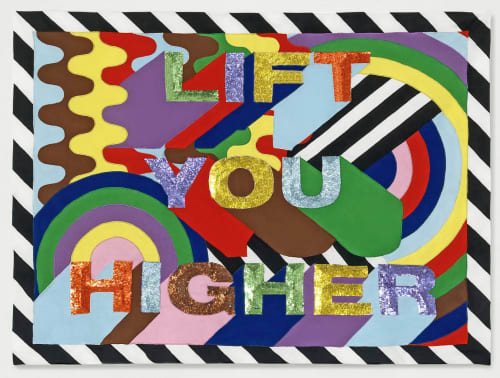In Normandy, the sky burns bright. Daffodils bloom and fruit trees blossom. At least, that’s the case in David Hockney’s universe, where most days are spent sketching the outdoors. The artist’s latest body of work – a series of iPad drawings produced while quarantining in France – was released earlier this year to bring some cheer. The images served as a reminder of the restorative power of art, the source of which, he said, comes from “love”.
Hockney isn’t the first artist to share their work as a respite from hardship. But few years can be used as an example of artistic generosity like 2020. Despite a 36 per cent drop in global gallery sales, more than a tenth of online commercial art platforms worldwide now offer artists (and buyers) the option to give a percentage of sales to charity. And that’s not including the artists who have donated work to raise funds for a specific cause.
This year, as the severity of the pandemic became apparent, the artistic community acted quickly. In spring, when the global need to support hospitals and those in need was paramount, initiatives were launched within weeks. In the UK, a series of 200 prints priced at £100 – from artists including Martin Parr, Juergen Teller and Jeremy Deller – raised more than £620,000 for the Trussell Trust’s food banks. The fundraiser was inspired by both Italy’s 100 Fotografi Per Bergamo, which collected more than €350,000 for medics working at the overwhelmed Pope John XXIII hospital in Bergamo, and the Pictures for Elmhurst sale in the US, which raised more than $1.3m for one of New York’s busiest hospitals, also under intense pressure during the first wave of the pandemic.
The response seemed all the more inspiring given that artists have been among some of the communities worst affected by the year’s economic upheaval. But efforts to support others continue, and not just in aid of the pandemic relief. After anti-racism marches started in May, hundreds of creatives both new and established donated work to raise funds in support of the Black Lives Matter movement. Among the more notable names was Takashi Murakami, who raised more than $1.3m with the sale of six limited-edition screen prints.
Similarly, following the devastating blast in Beirut in August, Art Relief For Beirut established an Instagram-based marketplace supporting the city’s recovery, which features work by a spectrum of artists, from New York newcomer Lara Nasser to the joint 2019 Turner prize-winners. And in London, Jealous Gallery’s “Help Portfolio” (£7,500) has gathered a group of 16 artists – among them Yinka Shonibare and the Chapman Brothers – to create a set of editions that raise funds for charities including Greenpeace and Solace Women’s Aid. Other top-end sales in time for Christmas include a collection of Quentin Blake’s drawings to benefit House of Illustration, and a fundraiser for Save The Children from Margate print shop Counter Editions, comprising works by David Shrigley, Tracey Emin and Antony Gormley. For those looking for works by emerging talent, there’s Art From The Streets and Relief Markt.
And for a truly accessible art gift, on 14 December fashion-photographer duo Inez & Vinoodh are launching Double Dutch, a platform that supports a variety of philanthropic causes through giftable, digital works of art. The idea is to combat festive waste with virtual cards featuring original and existing works by celebrated artists, and which enclose a charitable donation, priced at $2. As with much of these initiatives, part of the act of giving is making the artwork accessible to collectors on a variety of budgets. And, in that sense, it’s a gift that everyone can enjoy.
Lift You Higher by Lakwena Maciver, edition of 30, £3,000; all proceeds to UN Women UK’s Covid Response


